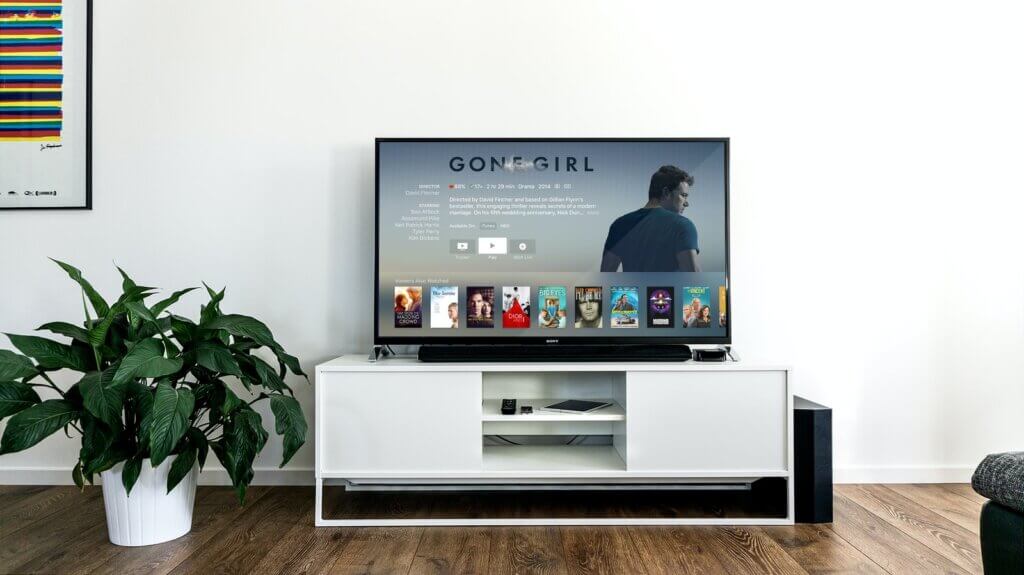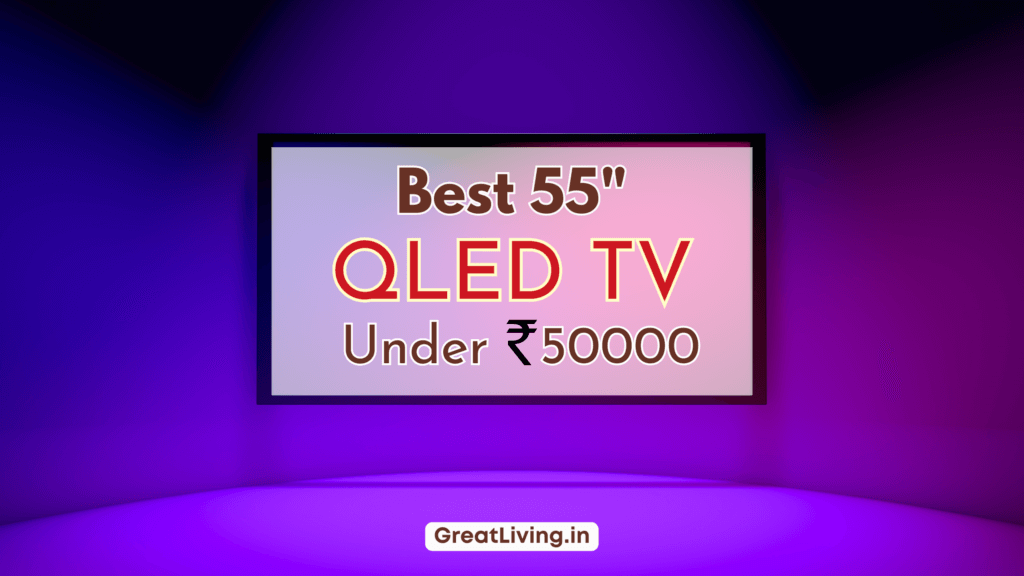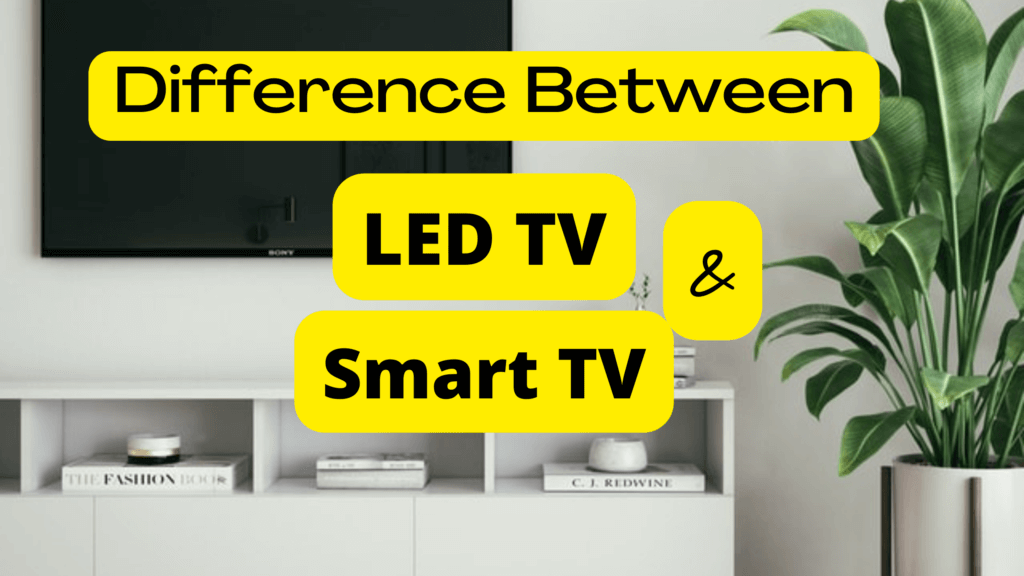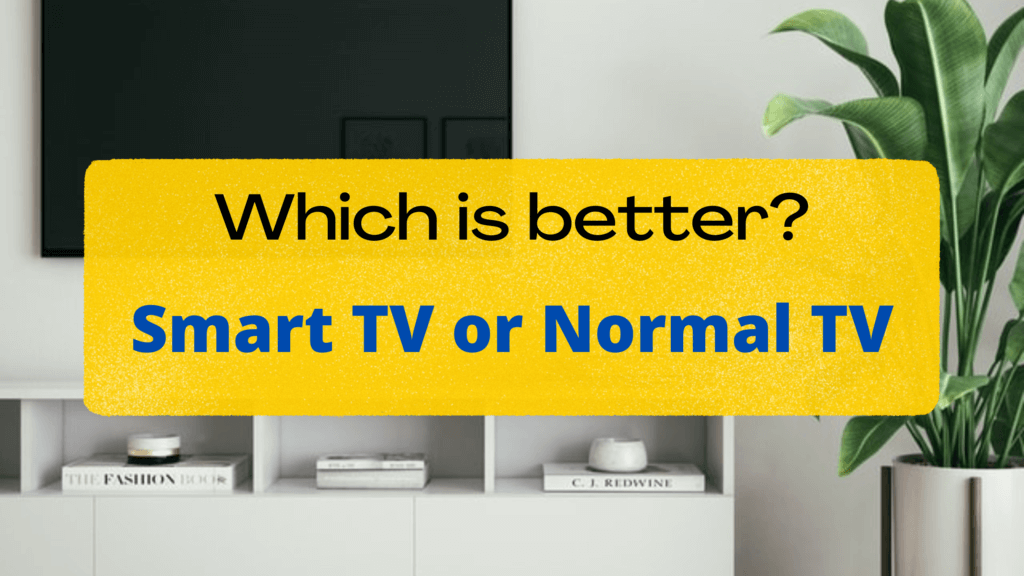Are you wondering what is LCD and LED?
Introduction
LCD and LED are two widely used terms in the world of television and display technology.
While they are often used interchangeably, they refer to distinct components that work in tandem to create the vibrant images we see on our screens.
In this article, we’ll delve into the meanings of LCD and LED, and differentiate between LED and LCD TVs.
Full form of LCD and LED
LCD stands for liquid crystal display.
LED stands for light-emitting diode.
Difference between LED and LCD TV
The difference between LCD and LED is that:
LCD:
LCD is the screen technology.
This technology utilizes liquid crystals that can be manipulated to control the passage of light, forming images on the screen.
LED:
LED is the backlight technology.
LEDs are used as a backlight source in most modern LCD screens, providing the necessary illumination to display images.
Don’t worry if this sounds complicated, you’ll have a complete understanding of both LCD as well as LED as you read the following sections.
Read on!
Difference between LED and LCD display
The image on the TV screen comprises various colors and brightness levels produced by the liquid crystals.
The light on your TV screen either moves through or is blocked by these liquid crystals in order to display the picture.
The liquid crystals only allow or block the light to pass through them. But where does this light come from?
It comes from the light-emitting diode (LED).
In other words, LED provides the backlighting that allows LCD to display images.
Both technologies work together to create the final picture quality.
Most of the present-day LCD screens are backlit by LED.
As such, the terms LED and LCD usually are used interchangeably.
EXPLORE NOW
LED and LCD: Which is better?
As explained above, LED and LCD are two distinct concepts.
They don’t compete with each other; rather they work together to give you that perfect picture quality on your TV screen.
The image on the TV screen is essentially the output of LED (the backlight technology) and LCD (the screen technology) working together.
The former is the source of light on your TV (to create the picture) and the latter is responsible for displaying the picture.
The picture is created and displayed on the screen when light (the source of which is LED) either moves through or is blocked by these liquid crystals (LCD).
👉 In conclusion, LCD and LED are two different technologies.
👉 They do not compete; rather they complement each other.
Hence, it isn’t fair to compare them.
In case you missed it:
Top 10 Smart & Android LED TVs
| Top 10 TV | Screen Size (inches) | Resolution | Operating System | Best Deal on Amazon | Overall Score | Model |
|---|---|---|---|---|---|---|
| MI Smart LED TV | 32 | HD Ready | Android | Price | 4.9/5 | 5A Pro |
| LG Smart LED TV | 32 | HD Ready | WebOS | Price | 4.8/5 | 32LM563BPTC |
| MI Smart LED TV | 43 | 4K Ultra HD | Android | Price | 4.9/5 | 5X |
| Samsung Smart LED TV | 32 | HD Ready | Tizen OS | Price | 4.8/5 | T4340 |
| Redmi Smart LED TV | 32 | HD Ready | Android | Price | 4.9/5 | L32M6-RA/L32M7-RA |
| Redmi 4K Smart LED TV | 43 | 4K Ultra HD | Android | Price | 4.9/5 | X43 |
| OnePlus Smart LED TV | 32 | HD Ready | Android | Price | 4.9/5 | Y1 |
| OnePlus Smart LED TV | 43 | Full HD | Android | Price | 4.9/5 | Y1S |
| Redmi Smart LED TV | 50 | 4K Ultra HD | Android | Price | 4.9/5 | X50 |
| Sony Bravia 4K Smart LED TV | 55 | 4K Ultra HD | Google TV | Price | 5.0/5 | X74K |
LCD or LED: Which is better for eyes?
LED and LCD are not competitors but collaborators.
So this question is unfair.
The modern-day LCD screens that are backlit by LED are generally safe for our eyes and do not emit harmful radiation like old CRT displays.
However, prolonged exposure to any screen can cause eye strain.
To reduce eye strain, consider factors such as screen brightness, blue light filters, and taking regular breaks from screen time.
High-quality LED displays with proper brightness and contrast settings can provide a comfortable viewing experience.
How to identify LCD and LED TV?
Identifying an LCD or LED TV is relatively simple:
LED TV:
Most modern LCD TVs are backlit by LEDs.
If a TV is labeled as LED, it typically means it employs LED backlighting technology.
LCD TV:
If a TV is explicitly labeled as “LCD,” it might be using older CCFL backlighting technology.
It’s advisable to check the specifications for the backlight type if you’re looking for an LED TV.
Advantages of LCD over LED
As both LCD and LED technologies work together to create the final picture quality on your TV, it’s not a matter of choosing one over the other.
Rather, it’s about appreciating how they complement each other.
So the more rational approach to put his question is “What are the advantages of LCD that is backlit by LED?”
LCD TVs with LED backlighting, offer several distinct advantages that have contributed to their widespread popularity in the world of visual entertainment.
Let’s delve into some of the key benefits:
- Enhanced Energy Efficiency: LED TVs are renowned for their energy-efficient operation. They consume significantly less energy, resulting in lower electricity bills and a reduced environmental impact.
- Slim and Sleek Design: The compact size of LED backlighting units allows for ultra-thin and lightweight TV designs. This sleek profile not only enhances the aesthetics of the television but also provides more placement options within your living space.
- High Contrast and Brightness: LED backlighting technology offers exceptional control over brightness levels and contrast. This enables LED TVs to deliver deeper blacks, brighter whites, and a wider range of colors, resulting in vivid and lifelike visuals that enhance the overall viewing experience.
- Better Color Accuracy: LED TVs often incorporate advanced color enhancement technologies that can achieve a higher level of color accuracy. This is particularly important for viewers who demand precise color representation, such as graphic designers, photographers, and video editors.
- Faster Refresh Rates: LED TVs typically boast faster refresh rates. This means smoother motion during fast-paced scenes, reducing motion blur and enhancing the clarity of action sequences in movies, sports, and video games.
- Longevity and Durability: LEDs have a longer operational lifespan, which means LED TVs are more durable and require fewer replacements. This longevity contributes to the overall cost-effectiveness of LED TVs in the long run.
- Dimming Zones and Local Dimming: Some high-end LED TVs feature local dimming technology, where specific zones of LEDs can be dimmed or turned off independently. This dynamic adjustment enhances contrast further by allowing deeper blacks and brighter highlights in specific areas of the screen.
- Wide Range of Sizes and Options: LED technology has become the industry standard for TVs, leading to a wide array of sizes and options available to consumers. Whether you’re looking for a compact screen for your bedroom or a large cinematic display for your home theater, LED TVs offer a diverse selection to cater to different preferences.
- Environmentally Friendly: LED TVs are eco-friendlier due to their lower power consumption and reduced use of hazardous materials. Their longer lifespan also means fewer TVs end up in landfills, reducing electronic waste.
In summary, LED TVs bring an impressive array of advantages to the table, ranging from energy efficiency and slim designs to improved picture quality and color accuracy.
These benefits make LED technology a compelling choice for individuals seeking an immersive and visually appealing television experience.
Some More Helpful Resources
✅ More Resources To Help You!
Conclusion
In the world of television and display technology, LCD and LED are crucial components that work together to produce the images we enjoy.
While LED provides the light source, LCD manipulates this light to create vibrant visuals.
Understanding their collaboration and respective advantages allows us to appreciate the intricacies of modern display technology and make informed choices when purchasing TVs and monitors.
As technology continues to evolve, both LCD and LED will likely play significant roles in shaping the future of visual experiences.
TRENDING NOW
POPULAR POSTS
- What is an Inverter Refrigerator?
- Where is the Freezer in Side by Side Refrigerator?
- Best Convertible Side By Side Refrigerator
- Best Side By Side Refrigerator Under 60000
- Midea Side By Side Refrigerator Review
- Difference Between 4 Star and 5 Star Refrigerator
- Difference Between Direct Cool And Frost Free
- What is Star Rating in Refrigerator? Know Everything!
- What is the difference between Single Door and Double Door Refrigerator?
- Advantages and Disadvantages of Double Door Refrigerator
- Advantages and Disadvantages of Single Door Refrigerator
YOU MAY ALSO LIKE TO READ
- What Is RPM in a Washing Machine?
- Why Front Load Washing Machines Are Expensive?
- How to Clean a Top Loader Washing Machine?
- How to Clean an LG Front Loading Washing Machine?
- What is Front Load Washing Machine?
- What is Anti-Tangle in Bosch Washing Machine?
- Do Impeller Washers Tangle Clothes?
- What Is Pulsator in Washing Machine?
- What is Cradle Wash in IFB Washing Machine?
- How To Load a Front Load Washing Machine?
- Best Semi Automatic Washing Machine in India
- Best Front Load Washing Machine in India 2023
- Best Impeller Top Load Washer in India 2023
- How Much Water does Front Load Washing Machine Use?
- How to use Front Load Washing Machine? India 2023
- Front Load Washing Machine Buying Guide – India – 2023
- Which Washing Machine is better – Semi or Fully Automatic in 2025?
- How to Select Washing Machine Capacity in 2023?
- Pros and Cons of Top Load and Front Load Washing Machines India 2023
- Difference between Top Load and Front Load – India (2023)?













































